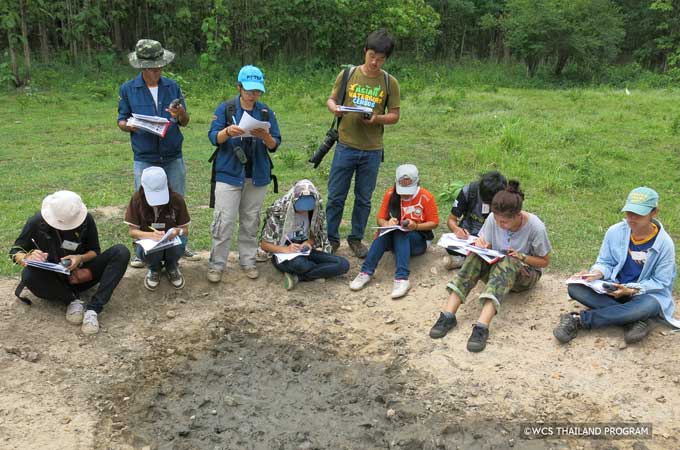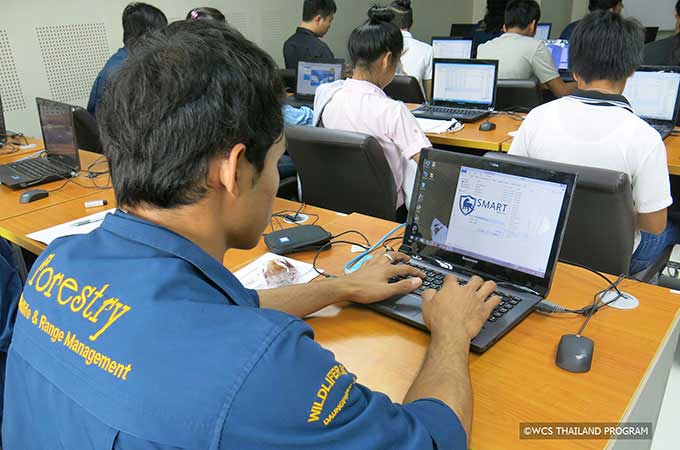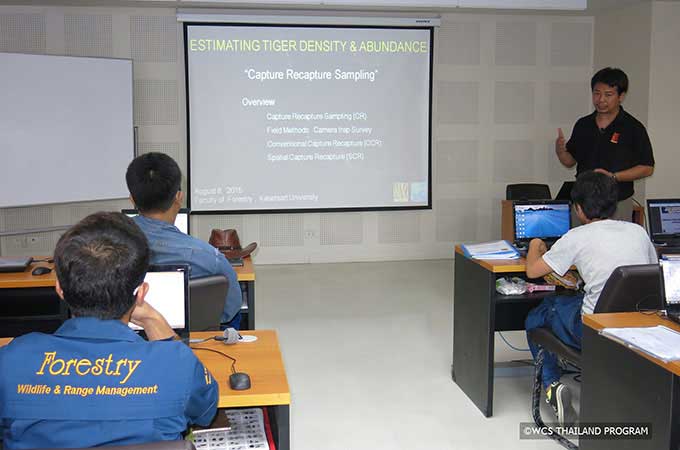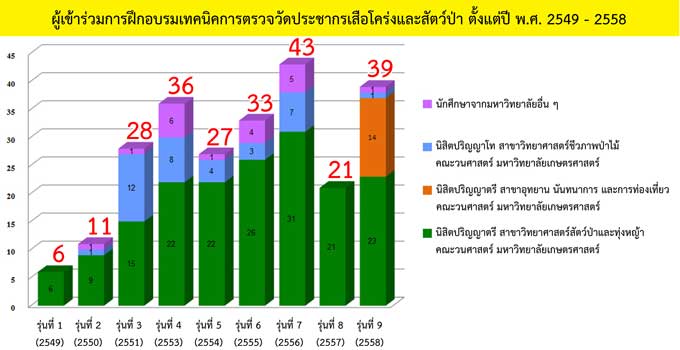The strengthened law enforcement under the Smart patrol system within Huai Kha Khaeng Wildlife Sanctuary (HKK) results in high abundance of wildlife. In addition, the protected area can be managed in more transparent and efficient way under a concrete monitoring system. The current patrol database used is SMART (Spatial Monitoring and Reporting Tool)--which is developed from MIST-based Smart patrol (Spatial Management Information System)--has been widely used in many national and international protected areas. As a pilot site, HKK has been using SMART since 2005 until now.

Wildlife Conservation Society (WCS) Thailand Program in collaboration of the Department of National Parks, Wildlife and Plant Conservation (DNP) and Khao Nang Rum Wildlife Research Station (KNR) initiated a long-term monitoring of tiger population, started at Huai Kha Khaeng Wildlife Sanctuary under Tiger Population Monitoring in Huai Kha Khaeng and Thungyai Naresuan Wildlife Sanctuary Project using Camera trapping method with Capture-Recapture Analysis process under the principles stated by Karanth and Nichole (2002). From the statistical analysis, it was founded that even only in HKK where the systematic study taken every year since 2006, there were around 80 - 100 tigers founded. The reveal makes this world heritage site becoming one of the most significant site as a hope for tiger recovery in global level.
Tiger is a predator at the top of food chain. Preys (gaur, banteng, sambar deer, wild pig and muntjac) are, therefore, the factor indicates its viable population. In each year in HKK, the monitoring of prey population methods was held in parallel with the tiger monitoring. The methods used for prey monitoring and research are; for example, Line Transect Survey method and Distance Sampling using Distance program etc., which researches were then extended to Thungyai Naresuan Wildlife Sanctuary.

| 
|
By the earnest effort based on statistic and scientific knowledge, the study results become valuable and useful source for outsider as well as the people in wildlife science concerns who may contribute our current studies to either practical use or further research in the relevant field. The Wildlife Conservation Society (WCS) Thailand Program, together with Khao Nang Rum Wildlife Research Station (KNR) therefore granted the New Generations of Wildlife Biologist Training on Tiger and Wildlife Monitoring Techniques project for the target groups of university students, researchers and scholars who are interested in science and technology which are applicable into wildlife and its population research field. The training consists of two sessions; field training (e.g. practice on map reading, GPS using, patrol data form usage etc.) and software operation training (e.g. practice on patrol database management by using program SMART, data analysis by using program CAPTURE-RECAPTURE and Presence etc.). This project has been continuously performed since 2006. Until now, we have altogether 244 participants who have passed the trainings. Most participated students are from Faculty of Forestry, Kasetsart University (KU). Under the Thai structure, the KU students are the almost the sole group of people being recruited to work as the Forest Technical Officer level at DNP. Many of them now have become wildlife professionals for the government.
